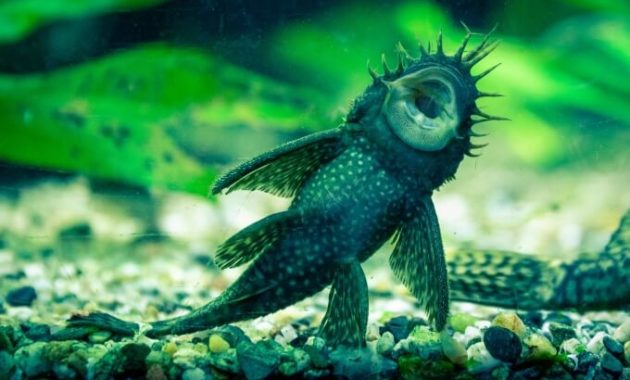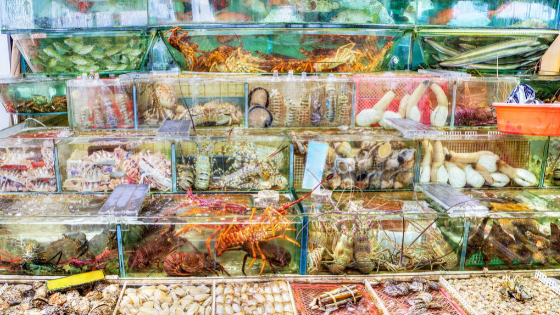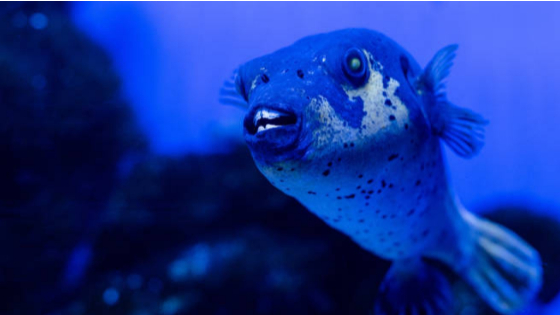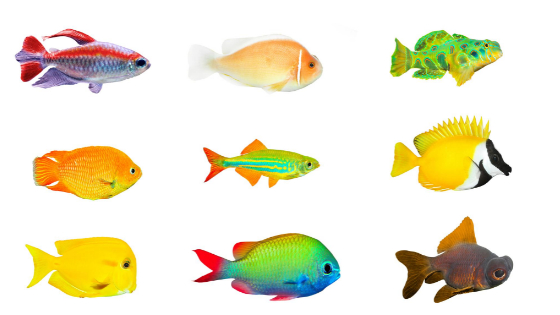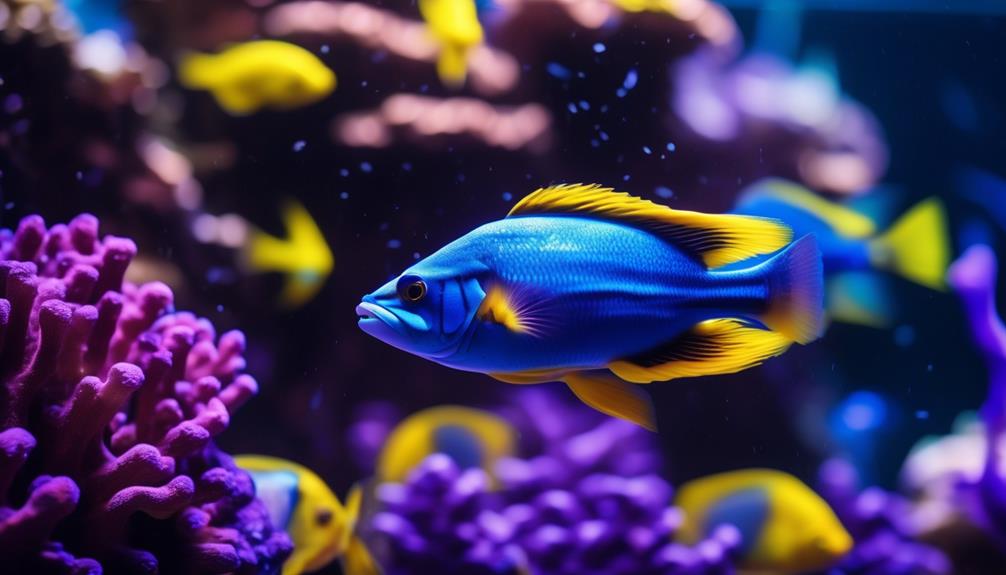
Are you searching for a unique and captivating addition to your saltwater aquarium? Have you ever heard of rare saltwater basslets?
These mesmerizing fish are not only visually stunning with their vibrant colors and intricate patterns, but they are also known for their hardiness and relative peacefulness.
But, here’s the catch – basslets can be territorial and aggressive towards their own kind, so providing the right environment and tank mates is crucial.
In this discussion, we will explore the fascinating world of rare saltwater basslets, from their suitable tank mates to their feeding habits and breeding behavior.
So, get ready to dive into the captivating world of these charming and hardy pets.
Key Takeaways
- Rare saltwater basslets are prized by aquarium enthusiasts for their captivating colors and unique patterns.
- Saltwater basslets require a larger aquarium of 55 gallons or more and ample hiding places to prevent aggression and territorial behavior.
- Suitable tank mates for saltwater basslets include dwarf angelfish, clownfish, damsels, boxfish, gobies, tangs, and hawkfish.
- Saltwater basslets are carnivores that accept live foods such as brine shrimp and mysis shrimp, but can be trained to accept flake and pellet-based foods.
Types of Rare Saltwater Basslets
When it comes to rare saltwater basslets, there are several types that stand out for their unique colors and patterns.
One of the most popular types is the Royal Gramma (Gramma loreto). This basslet is known for its vibrant purple and yellow coloration, which creates a stunning contrast.
Another striking basslet is the Swissguard Basslet (Liopropoma rubre). It features a beautiful combination of red and white, with intricate patterns that resemble a Swiss flag.
The Candy Basslet (Liopropoma carmabi) is another eye-catching species with its bright orange body and electric blue stripes.
Lastly, the Black Cap Basslet (Gramma melacara) stands out with its black cap and purple body.
These rare saltwater basslets are prized by aquarium enthusiasts for their captivating colors and unique patterns.
Tank Requirements for Saltwater Basslets
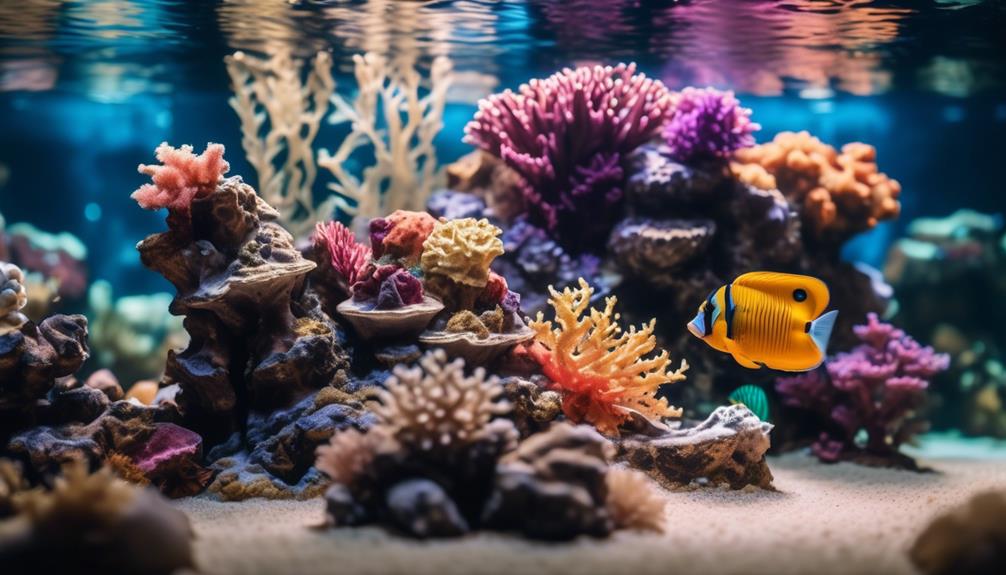
To provide the best care for saltwater basslets, it’s important to meet their specific tank requirements. Basslets require a larger aquarium, preferably 55 gallons or more, to accommodate their active nature and swimming habits. It’s recommended to provide ample hiding places to prevent aggression and territorial behavior.
These fish are community aggressive, so suitable tank mates include dwarf angelfish, clownfish, damselfish, boxfish, gobies, tangs, and hawkfish.
Weekly care is required, but basslets are relatively peaceful and hardy species, making them a popular choice among marine aquarists. They’re carnivores and accept live foods such as brine shrimp and mysis shrimp, but can be trained to accept flake and pellet-based foods.
Compatible Tank Mates for Saltwater Basslets
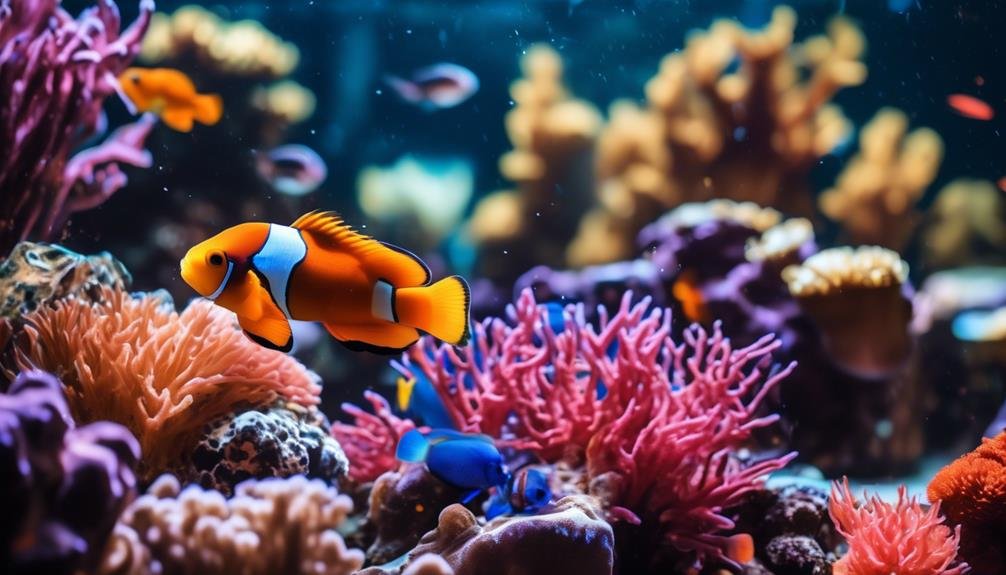
To ensure a harmonious aquarium environment for your saltwater basslets, it’s important to choose compatible tank mates. Basslets can be community aggressive, so it’s crucial to select species that can tolerate their temperament.
Suitable tank mates for saltwater basslets include dwarf angelfish, clownfish, damsels, boxfish, gobies, tangs, and hawkfish. These species are known to coexist peacefully with basslets in the same tank.
However, it’s essential to provide ample hiding places for the basslets, as they can be aggressive and territorial towards their own kind. When introducing new tank mates, monitor their behavior closely to ensure they’re getting along.
With the right companions, your saltwater basslets can thrive and create a visually stunning aquarium display.
Caring for Saltwater Basslets: Tips and Tricks
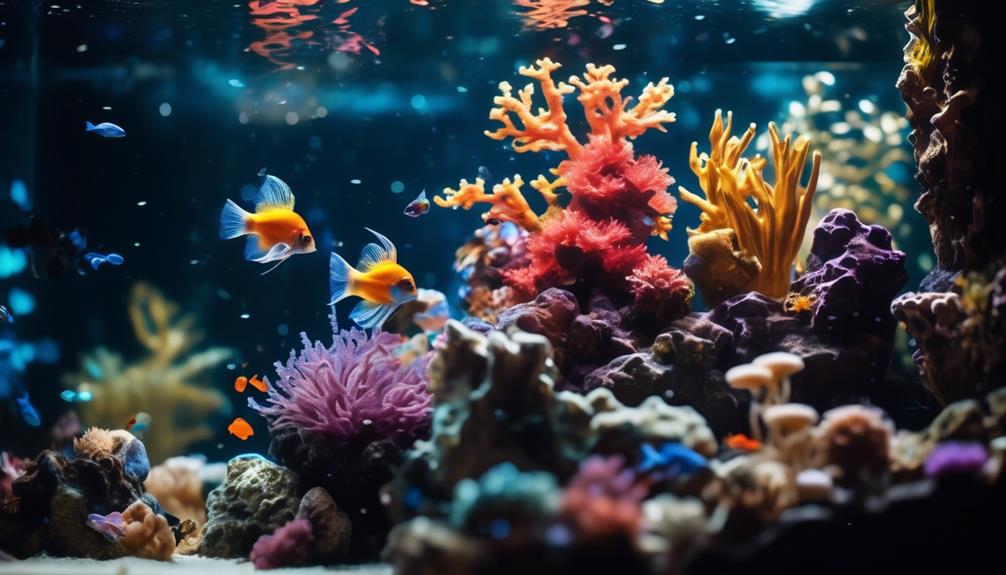
Taking care of saltwater basslets is a rewarding experience that requires attention to their specific needs. To ensure the well-being of these captivating and hardy pets, there are a few tips and tricks you should keep in mind.
Firstly, provide them with a suitable tank size, as they require a large aquarium of at least 55 gallons. It’s important to create ample hiding places in the tank, especially if keeping multiple basslets together, as they can be aggressive and territorial towards their own kind.
When it comes to feeding, basslets are carnivores and can be trained to accept flake and pellet-based foods, although they readily accept live foods such as brine shrimp and mysis shrimp.
With proper care and attention, saltwater basslets can thrive in your aquarium and bring beauty to your underwater world.
Feeding Saltwater Basslets: What They Eat
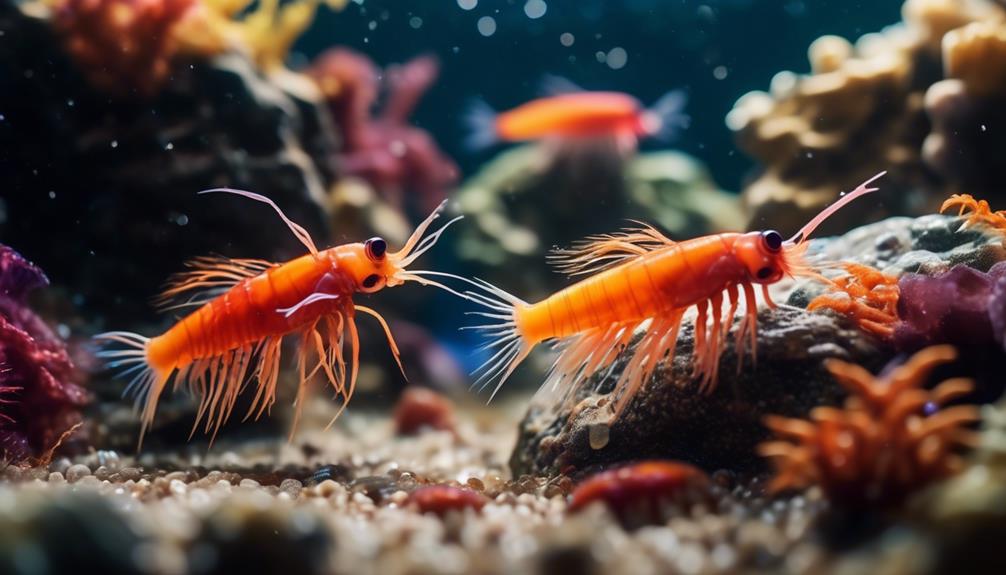
When it comes to the dietary needs of saltwater basslets, it’s important to understand what they eat. Here are the key points to know about feeding these captivating and hardy pets:
- Carnivores: Saltwater basslets are carnivorous fish, which means their diet primarily consists of meat.
- Live Foods: They readily accept live foods such as brine shrimp and mysis shrimp. These can be purchased frozen or live.
- Flake and Pellet Foods: With proper training, saltwater basslets can be trained to accept flake and pellet-based foods. This provides a convenient option for owners who prefer not to feed live foods.
Breeding Saltwater Basslets: A Fascinating Process
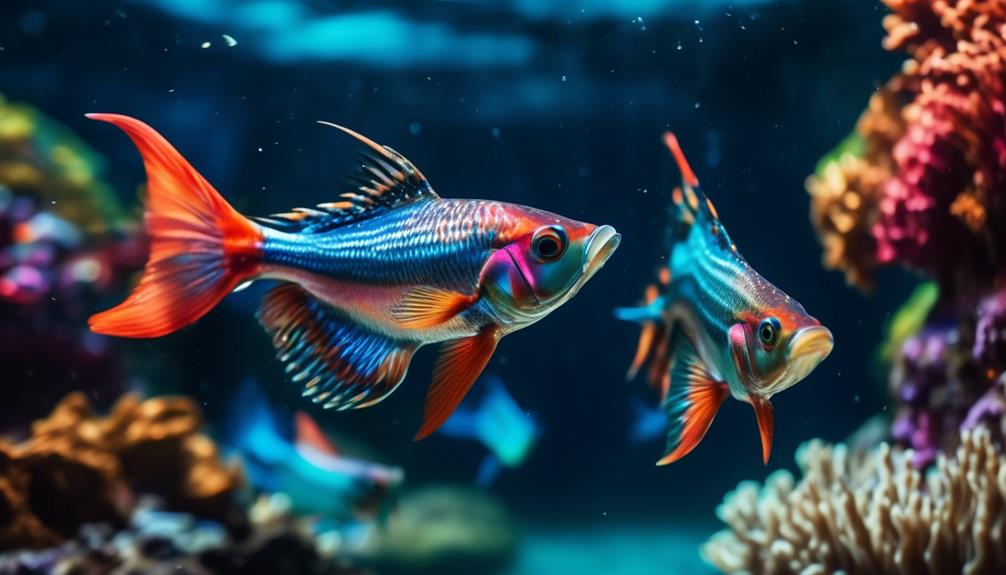
Breeding saltwater basslets is a fascinating process that showcases the intricate behaviors and reproductive strategies of these captivating fish. These fish have been bred in captivity since the 1960s, and the breeding process involves several interesting steps.
The male basslet builds a nest using algae and plant matter, creating a safe space for the eggs. The female then lays up to 400 eggs per spawn, which are fertilized by the male. Both parents take on the role of guarding the spawn until hatching, ensuring the safety and survival of their offspring.
One interesting aspect of saltwater basslets is that they’re sequential hermaphrodites, meaning they can change their sex depending on their reproductive situation. This adds another layer of complexity to their breeding process and highlights their adaptability in the wild and in captivity.
Common Challenges in Keeping Saltwater Basslets
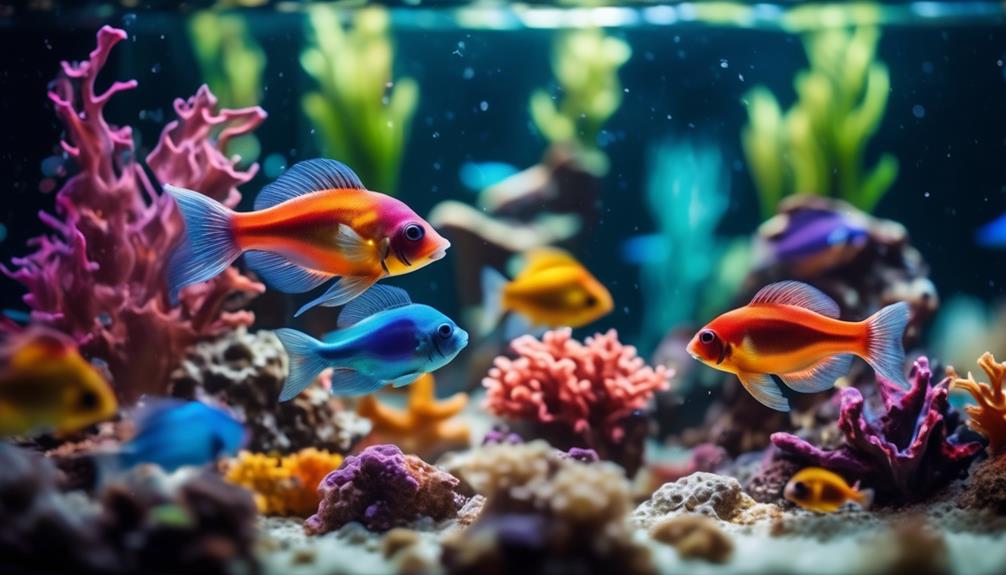
Now let’s explore some of the common challenges you may encounter when keeping saltwater basslets.
- Water Quality: Saltwater basslets are sensitive to changes in water parameters. Maintaining stable water conditions is crucial to their health and well-being. Regular testing and monitoring of the water parameters, such as temperature, salinity, ammonia, nitrite, and nitrate levels, is necessary to ensure a suitable environment for these fish.
- Aggression and Territory: Saltwater basslets can be territorial and aggressive towards their own kind, especially when kept in small tanks. Providing ample hiding places and creating territorial boundaries with the use of rocks and corals can help alleviate aggression and provide each fish with its own space.
- Feeding Challenges: Saltwater basslets are carnivorous and have specific dietary requirements. Some individuals may be finicky eaters and refuse to accept prepared foods. It can be a challenge to provide a varied diet that includes live foods, such as brine shrimp and mysis shrimp, while also training them to accept flake and pellet-based foods.
Frequently Asked Questions
How Long Do Rare Saltwater Basslets Typically Live in Captivity?
Rare saltwater basslets typically live for several years in captivity. With proper care and a suitable environment, they can live up to 5-7 years. Regular feeding, water maintenance, and a stress-free environment are key to their longevity.
Can Rare Saltwater Basslets Be Kept in a Smaller Aquarium if Provided With Ample Hiding Places?
Yes, rare saltwater basslets can be kept in a smaller aquarium if you provide them with ample hiding places. They are territorial and need their own space, so make sure they have enough room to swim and hide.
Are There Any Specific Water Parameters That Rare Saltwater Basslets Require?
Rare saltwater basslets require specific water parameters to thrive. They need a stable pH level between 8.1-8.4, a temperature range of 75-82°F, and a salinity of 1.020-1.026. Proper water quality is essential for their health and well-being.
What Is the Average Price Range for Rare Saltwater Basslets?
The average price range for rare saltwater basslets can vary depending on the species and size. It’s best to check with local fish stores or online retailers to get an accurate idea of the current market prices.
Can Rare Saltwater Basslets Be Kept With Invertebrates Such as Corals and Anemones?
Yes, rare saltwater basslets can be kept with invertebrates such as corals and anemones. They are peaceful and hardy, making them suitable tank mates for a variety of marine species.
Are Parrotfish Compatible with Rare Saltwater Basslets in the Same Aquarium?
Yes, colorful parrotfish in the ocean can coexist with rare saltwater basslets in the same aquarium. However, it’s important to consider the size of the tank, the specific species of parrotfish, and their compatibility with basslets. Research and proper tank setup are crucial for a successful mixed-species aquarium.
Conclusion
In conclusion, rare saltwater basslets are a captivating and hardy addition to any saltwater aquarium. With their vibrant colors and intricate patterns, they’re sure to be a focal point in your tank.
While they can be territorial and aggressive towards their own kind, providing ample hiding places can help alleviate any conflicts.
With proper tank requirements, compatible tank mates, and regular feeding, these fish can thrive and provide endless enjoyment for marine aquarists.

